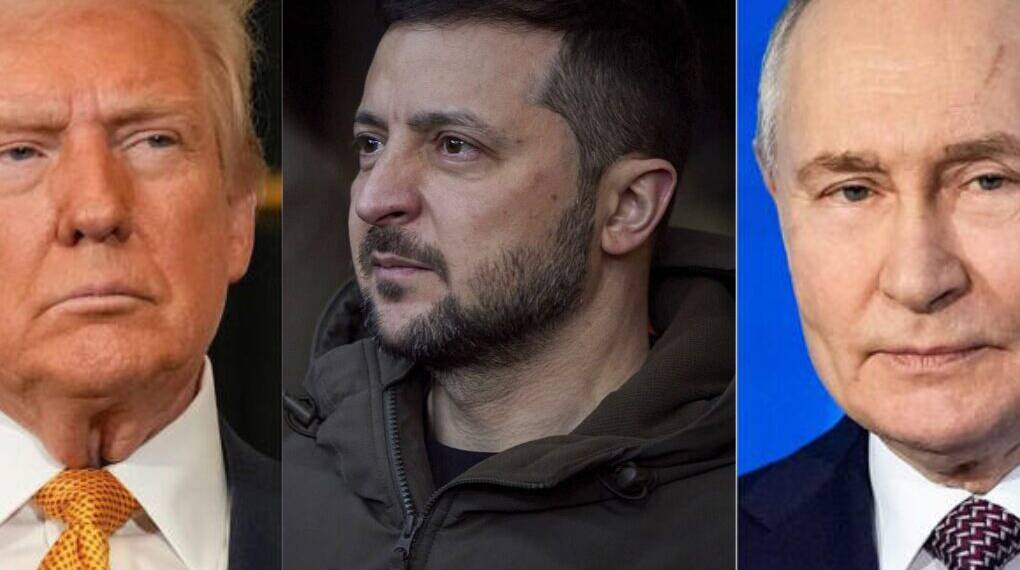Russia unleashed an unprecedented barrage of 728 drones on Ukraine overnight, marking the largest single air assault of the ongoing war, now in its fourth year. The attack, which also included six hypersonic missiles, targeted multiple regions, including the northwestern city of Lutsk near NATO-member Poland.
The strike came hours after U.S. President Donald Trump sharply criticized Russian President Vladimir Putin and pledged additional defensive weapons to Kyiv, signaling a potential shift in U.S. policy toward the conflict.
Escalating Air Assaults Strain Ukrainian Defenses
Kyiv’s military reported neutralizing nearly all of the drones, but some of the hypersonic missiles caused unspecified damage, according to air force spokesperson Yurii Ihnat. The widespread attack resulted in one fatality from drone debris in western Ukraine and eight deaths in the Ukrainian-held Donetsk region, where drones and guided bombs struck frontline areas, Reuters reported.
In Lutsk, approximately 200 km from Poland, 50 drones and five missiles targeted the city of 200,000, damaging a storage facility and parking structures but causing no reported casualties, said Mayor Ihor Polishchuk. The assault prompted Poland to scramble jets to secure its airspace, underscoring the proximity of the conflict to NATO borders.
Residents across Kyiv and other major cities sought refuge in air raid shelters, including metro stations, as the attack unfolded. Ukrainian President Volodymyr Zelenskiy described the strike as a stark reminder of the need for “biting sanctions” on Russia’s war-financing revenue streams, particularly targeting nations purchasing Russian oil, gas, and uranium.
Trump’s Surprising Shift and Criticism of Putin
The attack followed President Trump’s unexpected remarks on Tuesday, where he expressed frustration with Putin, stating, “We get a lot of bullshit thrown at us by Putin … He’s very nice all the time, but it turns out to be meaningless.” Trump also indicated support for a proposed bill imposing 500% tariffs on countries buying Russian energy and resources, a significant departure from his earlier conciliatory tone toward Moscow.
When pressed on potential actions against Putin, Trump remained cryptic, saying, “I wouldn’t tell you. We want to have a little surprise.” His pledge to supply more defensive weapons to Ukraine appears to reverse a recent Pentagon decision to pause critical munitions deliveries, a move that had raised concerns amid escalating Russian attacks.
International Responses and Diplomatic Efforts
Zelenskiy, preparing to meet U.S. envoy Keith Kellogg in Rome on Wednesday, emphasized the urgency of bolstering Ukraine’s air defenses. He also met with Pope Leo, who offered to host peace talks at the Vatican—an option Zelenskiy called “entirely possible” but noted Russia has so far rejected.
German Chancellor Friedrich Merz, speaking after the attack, declared diplomatic efforts to resolve the war exhausted and vowed continued support for Kyiv, including an offer of air defense systems at a Rome conference on Thursday. Meanwhile, Europe is developing a new sanctions package against Moscow, though previous rounds of Russia-Ukraine talks, including a Trump-proposed unconditional ceasefire accepted by Kyiv, have yielded little progress.
A War at a Critical Juncture
The record-setting drone assault underscores the intensifying pressure on Ukraine’s air defenses as Russia escalates its air campaign. The conflict, sparked by Russia’s February 2022 invasion, has seen renewed diplomatic activity since Trump’s return to power, with promises of a swift resolution. However, Moscow’s rejection of ceasefire proposals and continued aggression highlight the challenges ahead.
As Ukraine braces for further attacks, Zelenskiy has ordered expanded coordination with the U.S. to secure critical military supplies, particularly air defense systems. The international community’s response, coupled with Trump’s evolving stance, will likely shape the next phase of this protracted conflict.








